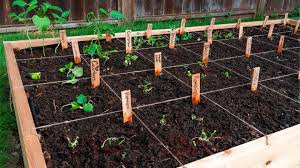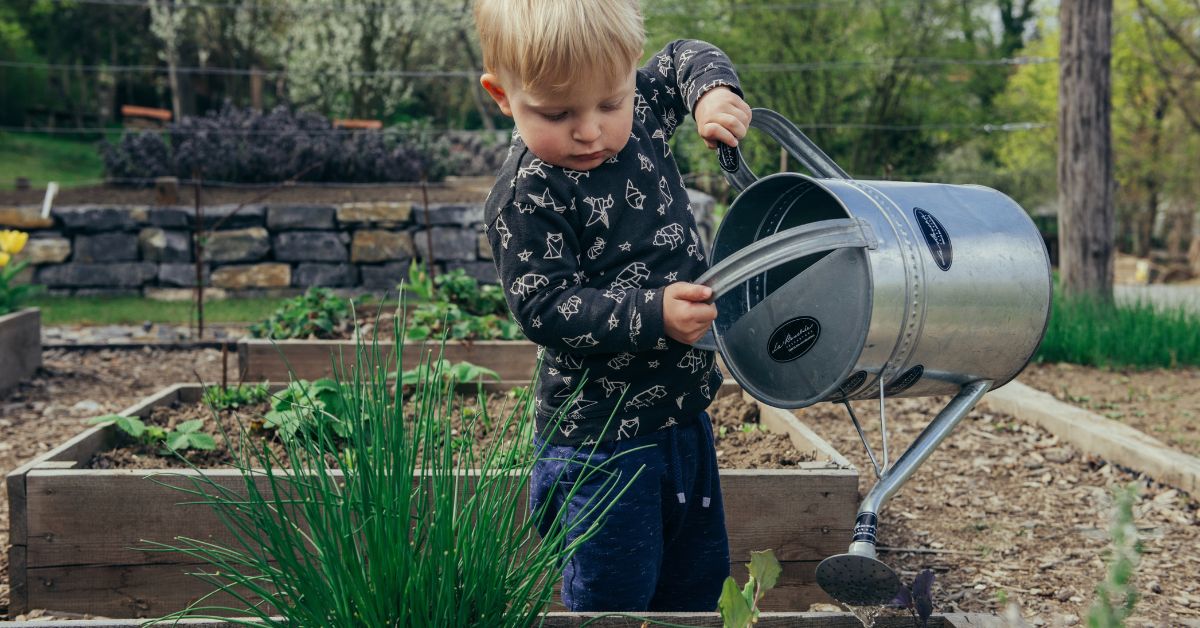
There are several reasons why companion planting is beneficial in square foot gardening. In addition to saving space, it also saves energy (once the correct soil mixture has been mixed).
The suitable crops can also eliminate weeds and pests, allowing you to grow more varieties of vegetables in a limited space. It is essentially possible to go chemical-free. To maximise yield, however, plants must be adequately spaced and kept at a height that will maximise their yields.
A Square Foot Garden Companion Planting Guide
Gardening square feet allows you to grow much more than you would typically in a small space. New cultivating methods take up 80% less space and require 80% less work.
Using a rectangle of 4 feet by 4 feet, you can create a grid of 16 square feet. A set number of plants are planted per square foot, per square foot treated as a separate patch.
The Benefits of Companion Planting in Square Foot Gardens
Square-foot gardens can still be helpful even with a large garden area. There is a specific benefit to growing plants together, some more than others, but the results are incredible when done correctly.
Nine different plant species can be grown in a three-by-three-foot garden. By attracting insects, pollinators, and predators, you can aid in the growth of your crops.
What can you plant next to each other in a square-foot garden?
1. Tomatoes
In the kitchen and the garden, basil and tomatoes were destined to be friends. Tomato yields are increased while this herb repels flies and mosquitoes.
Besides marigolds, worms and other plant pests are also attracted to marigolds. The onion family, lettuce, parsley, asparagus, carrots, celery, and celery are all good companions for tomatoes.
Vegetables such as cabbage, beets, peas, fennel, dill, and rosemary are considered foes. It is best to keep corn and tomatoes apart to prevent the spread of corn earworm and potato blight.

2. Peppers
Basil will repel aphids, spider mites, mosquitoes, and flies from pepper plants. The flavour of the pepper is also supposed to be enhanced by basil. It is also lovely to pair onions, spinach, and tomatoes.
The vines of beans will spread among the pepper plants making them a foe.
3. Green Beans
Corn and beans grow well together because beans climb up corn stalks, so scaffolds are unnecessary. Beans also fix nitrogen in the soil, which helps corn grow. Marigolds, nasturtiums, and rosemary improve the flavour and rate of development.
Onions and beets are foes. Onions inhibit the growth of bean plants in particular.
4. Cucumbers
Plant marigolds and nasturtiums among your cucumber plants to keep aphids and beetles away. In addition to beans, celery, corn, lettuce, dill, peas, and radishes, companion plants are also available.
Cucumbers will struggle to grow if aromatic plants, such as sage, surround them
5. Onions
To prevent carrot fly infestations, plant carrots near onions. Onions are aphid-resistant (but onion-friendly) vegetables, so plant them near them to avoid pests. Many vegetables are fantastic buddies of onions, including beets, cabbage, carrots, lettuce, parsnips (which can also endure carrot fly), tomatoes, and spices like marjoram savoury and rosemary.
Peas, beans, and asparagus are foes.
Tips for Companion Planting
Specific amounts of vegetables are planted in each square (the number varies depending on the plant) at specific distances.
This method allows you to grow more vegetables in less space, maximising each plant’s area and nutrient utilisation. Companion planting can even improve the health of plants.
1. Research
Identify which plants should be planted together within each square in your square foot garden before planting your seeds (or transplanting your seedlings).
2. It is not possible to get along with all plants
Some plants fight for nutrition, and others attract pests that can harm their companion plants.
On the other hand, some pairings create the ideal healthy balance by bringing out the best in one another, attracting suitable insects, and attracting the right pollinators.
3. Monoculture is not allowed
Your square foot garden should contain a variety of plants that are mutually beneficial to each other, as one type planted close together will attract more pests and diseases.
4. Make sure you keep your height in mind
To ensure your shorter plants (like basil, bush beans, and celery) receive their fair share of the sun’s rays, plant taller vegetables on the north side of your bed.
Plant your tall plants in the middle if you’re mixing shade and heat-loving plants. Shade-loving plants should be planted on the north side, and heat-loving plants should be planted on the south side.
5. Protect your veggies with Veggie Protectors
Insects and pests are repelled by alliums (onions, garlic, leeks, and shallots), which can be used to create a barrier around your growing area. Beans should be kept away from them.
6. Adding a splash of colour
The square-foot garden will benefit from planting herbs and flowers that repel insects such as egg-laying butterflies and nematodes, like sage with brassicas and marigolds with nightshades.
Conclusion
Having fresh, homegrown vegetables from one’s yard and the fruits of one’s labour is a dream for many people. A homegrown vegetable cannot be compared to anything else. This can be achieved through companion planting in square foot gardening.

FAQs
What is the best way to lay out a garden?
Tall vegetables should be placed towards the back, medium ones should go in the middle, and smaller ones should go in the front or along the border. You can increase your harvest by adding pollinator plants that will not only attract beneficial insects but will also prey on garden pests.
What are the benefits of square foot gardening?
For those with space limitations, square foot gardening is ideal because it grows 100% of the crop in 20% of the space. When densely planted crops, they can act like a “living mulch” to prevent weeds from germinating or establishing.


